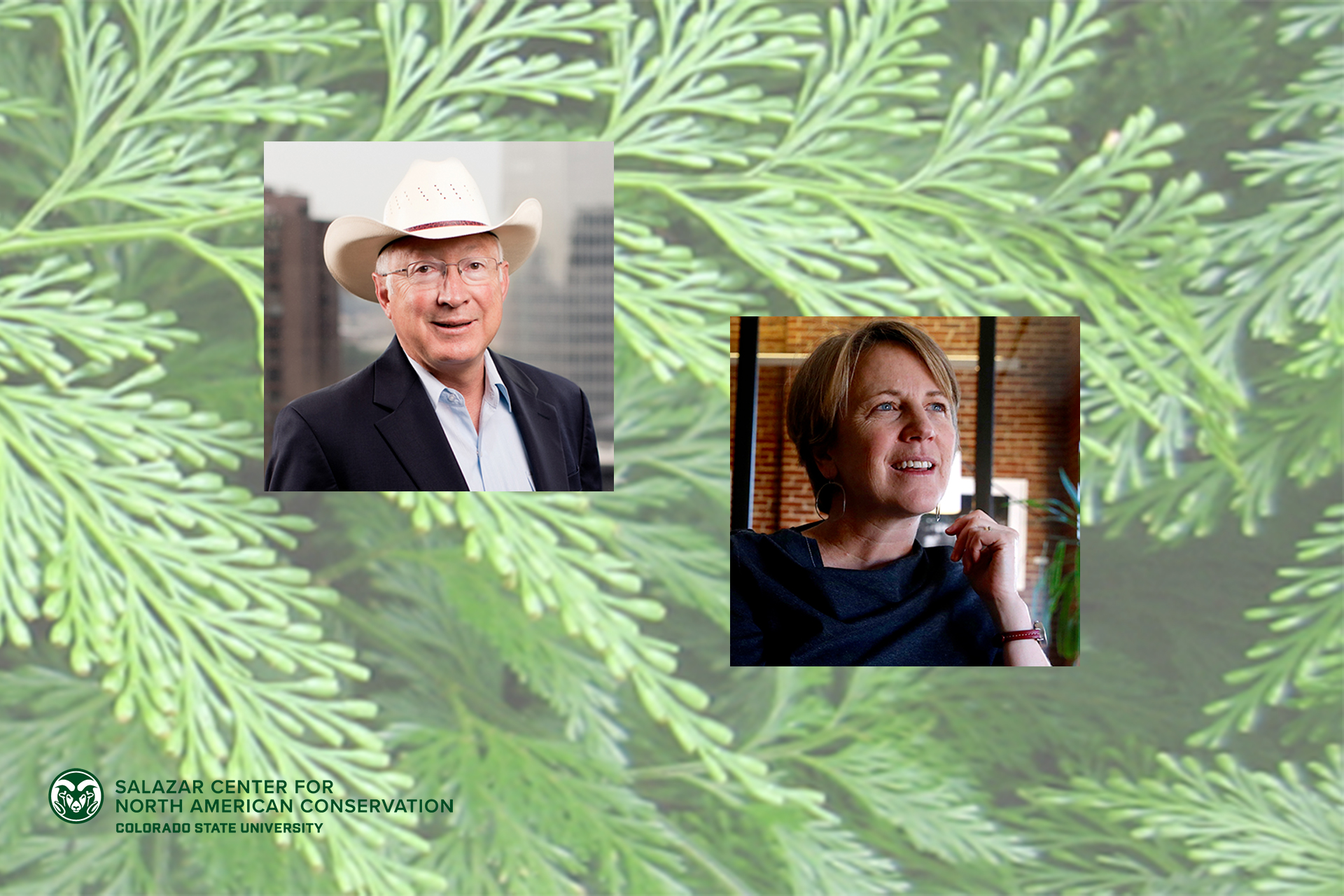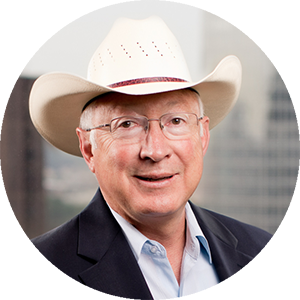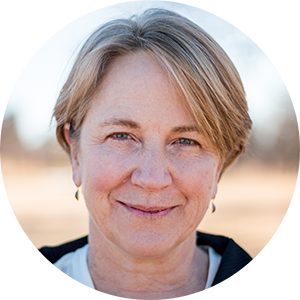
Former U.S. Interior Secretary Ken Salazar and Beth Conover, director of the Salazar Center for North American Conservation, sat down with SOURCE prior to the inaugural International Symposium on Conservation Impact.
Colorado State University’s Salazar Center for North American Conservation hosts its inaugural International Symposium on Conservation Impact this week in Denver.
The event features former U.S. Interior Secretary Ken Salazar, local and state leaders — including Colorado Gov. Jared Polis — CSU President Joyce McConnell and CSU System Chancellor Tony Frank, and a broad range of conservation experts from Canada to Mexico.
Prior to the big event, Salazar and Beth Conover, director of the Salazar Center for North American Conservation spoke with SOURCE and outlined a few of the center’s goals and main initiatives. An edited transcript is below.
Question: Tell me about landscape connectivity – why is it important and what are a few examples of how this has been successful in communities?
Answer: Ken Salazar
I got involved in landscape connectivity almost 30 years ago. When I served as the executive director of the Department of Natural Resources in Colorado, I managed programs for rivers and river corridors. I was involved in exploring future possibilities for Clear Creek, which is a tributary of the South Platte River in the Denver metro area. I also was involved in projects on the Colorado River and every major river in Colorado.
Connectivity of our rivers to wildlife is at the heart of a healthy ecosystem, and we connect landscapes in a way that transcends barriers and walls that exist from local to national levels. Rivers are split, in large part, because of jurisdiction.

“Connectivity of our rivers to wildlife is at the heart of a healthy ecosystem, and we connect landscapes in a way that transcends barriers and walls that exist from local to national levels.”
— Ken Salazar, former U.S. Interior Secretary
The Great Outdoors Colorado movement, which I helped create with former Gov. Roy Romer in 1990, was borne out of some of those connectivity concepts. What I tried to do back then through that program and my work was to connect ecosystems across jurisdictional boundaries.
I got my start in landscape connectivity there and built on it as a U.S. Senator, and then as U.S. Secretary of the Interior. In the latter role, I was working on landscapes across the entire country. We were dealing with opportunities and challenges — as well as climate change — and we recognized that this was important enough to create Landscape Conservation Cooperatives. The result was connected landscapes all across the U.S. These cooperatives are still living, breathing, dynamic and moving forward.
There’s increased recognition about landscape connectivity all across the U.S., and lessons for other places in our country, but also across the Americas.
I have always seen how landscape connectivity is important for wildlife, fish and people. I’ve worked with others to connect ecosystems between the U.S. and Mexico, and the U.S. and Canada. The Crown of the Continent, which connects Glacier National Park in the U.S. and Waterton Lakes National Park in Canada, is a great example of the importance of landscape connectivity.
Q: Could you talk about diversity, equity and inclusion in the conservation realm, and how the center will focus on that work?
A: Beth Conover
Conservation is of critical importance to everyone. The idea behind the Center is, in part, to build a broader constituency. Traditionally, conservation is associated with a small demographic: wealthy white people. But recently, groups like Green 2.0 have pointed out that environmental values are much more widespread. People from all demographics care about clean air, water and natural areas. Our hope is to broaden the narrative, and to bring new voices forward including Native Americans and First Nations, city residents, young people and people of color. We want this broader constituency to see themselves in conservation issues and policies — many are already doing so — and to shape the narrative moving forward.

“People from all demographics care about clean air, water and natural areas. Our hope is to broaden the narrative, and to bring new voices forward including Native Americans and First Nations, city residents, young people and people of color. ”
— Beth Conover, director of Salazar Center for North American Conservation
A: Ken Salazar
The world of the environment and conservation has really failed to have what I would call an imperative for an inclusive America. For me, it’s a civil rights issue, something that has been a keystone of my life’s work.
No one should be left out, no one should be left behind.
Right now, when you look at communities of color and women, the conservation-environmental community has not engaged as it should have with these communities.
In 1990, when I was the head of the Department of Natural Resources in Colorado, I put together a conference on diversity because environmental organizations, including Sierra Club and the Environmental Defense Fund, essentially had no representation from communities of color. While some progress has been made, much remains to be done.
It has been an ongoing challenging for all of those organizations.
I hope that communities that have been left out have an opportunity to participate, through what we’re trying to build at the Salazar Center. For example, Native American communities have a very long and historic relationship with public lands and conservation, yet their contributions and support are not always included or recognized.
Q: How and why did you decide to create an incentive prize?
A: Beth Conover
What we’ve observed is a real interest in the connections between healthy natural systems and healthy communities, and there are a lot of groups working on a lot of different fronts on connectivity. It’s been hard to collect the information on what exists in one place.
We want to understand the best in class examples of the work that’s being done. Because we are a small organization but have very strong leadership, there’s an opportunity to have people come to us with their stories and ideas.
We are offering $100,000 for groups with ideas to create conservation impact to scale, meaning we are looking for big and bold ideas. It’s an award that says: what are your best ideas, and how can we bring everyone who submits ideas together? It’s not a “winner takes all” model.
We are building a community of interest, and using it for future and ongoing conversations. It’s like a Shark Tank or Dolphin Tank model, having people pitch their ideas, where can you realize the greatest impact. In this case, we are also working across borders and thinking about new tools for doing that.
A: Ken Salazar
With all the metrics we’ve seen on the environment and education, CSU is at the very top. To have a prize that incentivizes conservation and working across North America, it made sense for us to create this award, and to have this kind of a prize housed at CSU.
Q: What else would you like people to know about the Salazar Center?
A: Ken Salazar
We are very excited about the symposium and the work that lies ahead.
My view of the center is that it’s a catalyst for action in best ideas. My hope is the symposium is about sharing information but also will be a catalyst for positive action on the ground.